The leaves are changing, there’s a crispness to the air, and the days are getting shorter. We all know what this means. Fall is here. Unfortunately, it means something else too. Although we have been dealing with COVID-19 for close to two years, the Cold and flu season is officially upon us. This can often bring with it feelings of anxiety, especially in those with young children, but the flu isn’t the only thing to be on the lookout for this fall.

There’s another virus out there that perhaps you haven’t heard as much about, RSV. RSV is a common viral infection among children, and infections are on the rise. So what can you do? Today we’ll discuss what RSV is, how to spot it, and what to do if your child is infected with it.
What is RSV?
Put simply, RSV is a respiratory infection. Almost all children will contract RSV, or Respiratory Syncytial (sin-SISH-uhl) Virus, by the time they are 2 years old. Most cases tend to be mild and present like a cold. However, some cases can be serious and even deadly. RSV is the most common cause of bronchiolitis (inflammation of the small airways in the lung) and pneumonia (infection of the lungs) in children under the age of one in the United States.
Is RSV on the rise?
If you feel like you’ve been hearing more about RSV than in previous years, you’d be right. With the mask mandates and social distancing of 2020, RSV infections (as well as flu infections) saw a huge decrease last year. However, as these safety measures relaxed, cases began to rise in the spring and summer of 2021.

Statistics show that during the week of July 10th, 2021, there were around 2,000 confirmed cases of RSV. The same week in 2020 saw less than a dozen confirmed cases. The actual number of infections is likely much higher.
According to the CDC, most clinics don’t test children for RSV outside of the usual season of fall through spring. As we enter the new school year, where children will be in closer contact with one another (face to face contact) cases are expected to rise even more.
Who can get RSV?
Anyone can contract RSV but it tends to be most common in children and infants. Those who are particularly susceptible to RSV include:
- Very young infants, especially those 6 months and younger
- Premature infants
- Children with weakened immune systems
- Children younger than 2 years old with chronic lung disease or congenital (present from birth) heart disease
- Children with neuromuscular disorders, including those who have difficulty swallowing or clearing mucus secretions
Causes of RSV

One reason children seem to contract RSV so easily is the way it spreads. RSV is spread by coming into contact with fluid from an infected person’s nose or mouth. For example, if a contaminated person coughs or sneezes on a table surface and a child touches that surface and then touches their eyes, mouth, or nose, then the child could get infected. Or, if an infected person holds a child, then particles could easily spread to the child. This is why mask mandates and social distancing were so effective in preventing surges in cases last year.
Symptoms of RSV
Knowing what symptoms to be on the lookout for is essential to catching RSV early. Symptoms usually appear within 2 to 5 days after contact with the virus and can include:
- Fever
- Runny nose
- Short periods without breathing (apnea)
- Cough
- Difficulties eating, drinking, or swallowing
- Wheezing
- Straining of the chest or flaring nostrils while breathing
- Breathing faster than usual
- Trouble breathing
- Turning blue around the lips and fingertips
Symptoms of RSV often seem like other conditions. If you suspect your child has RSV, seek medical attention for a proper diagnosis and course of treatment.
What to do if your baby has RSV
RSV symptoms tend to be at their worst during the first 3 to 5 days of the illness. Fortunately, most children recover from the infection on their own, with the help of at-home treatments. Your doctor will likely advise you to do the following:
- Remove sticky nasal fluids with a bulb syringe using saline drops
- Use a cool-mist vaporizer to keep the air moist and make breathing easier
- Provide fluids in small amounts frequently throughout the day
- Give non-aspirin fever-reducers such as acetaminophen
However, as mentioned earlier in this blog, some cases can become more severe. You should call your child’s pediatrician if they develop any of the following symptoms:
- Pauses in or difficulty breathing
- Significantly decreased activity and alertness
- Symptoms of dehydration (fewer than 1 wet diaper every 8 hours)
- Very fussy
- Excessively sleepy
- Sunken eyes
- Cool, discolored hands and feet
- Wrinkled skin
- Urinates only one to two times per day
- Symptoms of bronchiolitis
- Dry or mucus-filled cough
- Slight fever
- An overall body discomfort or not feeling well
- Vomiting or gagging
- Chest congestion or pain
- Runny nose, often before a cough starts
- Chills
- Wheezing
- Back and muscle pain
- Sore throat
- Gray or blue color to tongue, lips, or skin
For babies with more serious cases requiring hospitalization, treatment may include:
- Oxygen
- IV fluids
- Medications to open the airways
You can help protect your child
As the world continues to open up, and with inconsistency in mask mandates, we’re likely to see RSV cases continue to rise. It can feel scary and overwhelming, but you can help keep your baby safe. You can limit your child’s exposure to RSV by:
- Keeping the child at home during their first winter season, if possible
- Avoiding contact with sick people
- Refraining from kissing your baby in the face, if you have cold symptoms
- Washing toys and the baby’s environment regularly
- Protecting them from contact with smoke
- Making sure everyone washes their hands before touching the baby
- Consider asking those not in your household to wear masks around the baby
And don’t forget, if you feel your child needs emergency care, your Best Neighbors Ever is only a short drive away.

Back to Blog